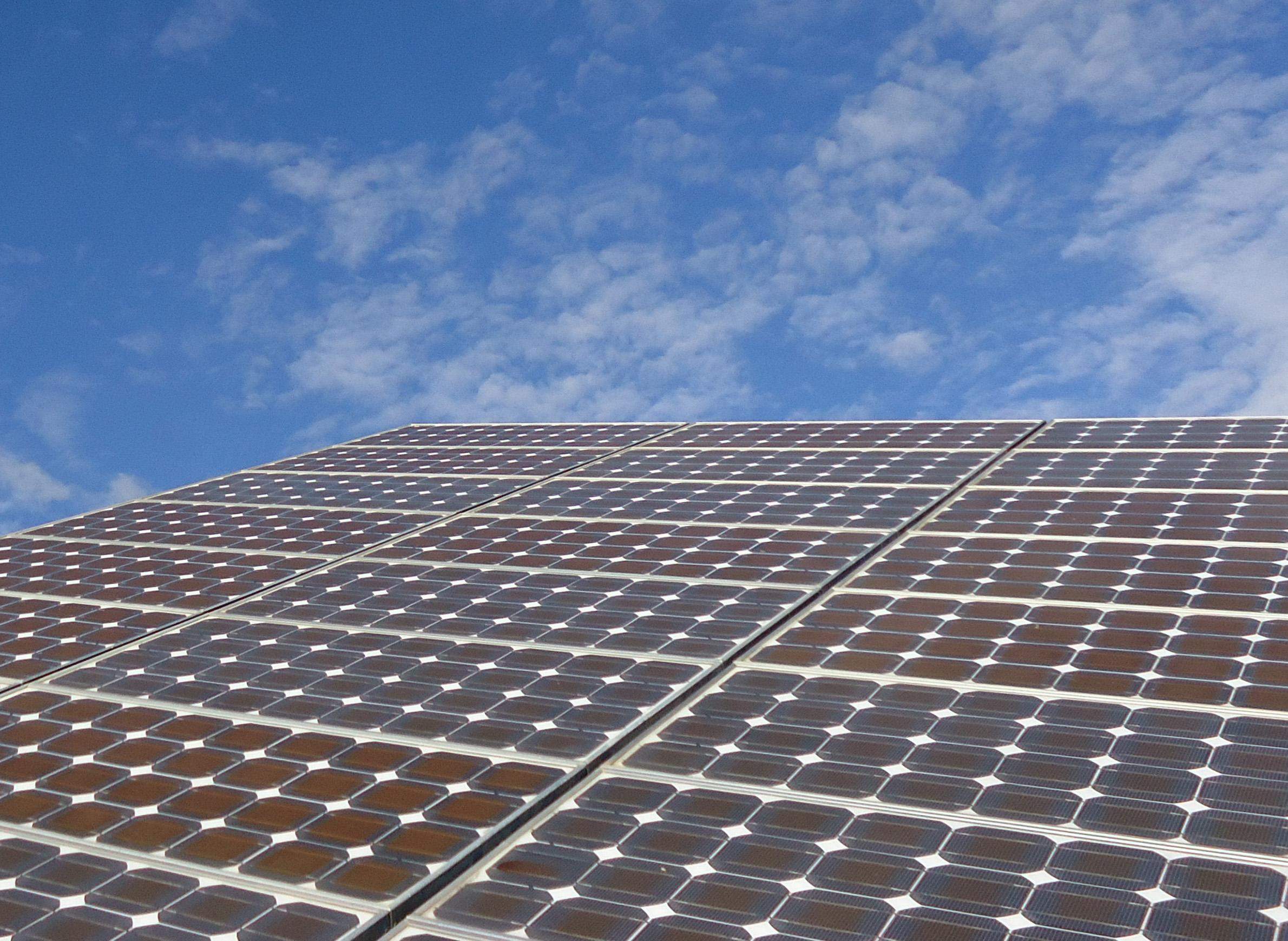
Embracing Solar Energy Can Be Fun And Fraught

Bruce Johnson has put a great deal of time and money into changing the way he uses energy. His house on the east side of Madison sports three rooftop solar-panel installations: one serving his water heater, another powering his home's other electricity needs, and another being basically devoted to help charge his electric car, a Nissan Leaf. Since he sells his solar-generated power back to the local power utility, Madison Gas and Electric, Johnson dubs himself a "solar farmer."
While he’s all-in on solar, the complexities of it still nag at him, and he discussed some of them in a March 18, 2015, talk titled "Insights from a Conflicted Solar Farmer." His talk was part of the the Wednesday Nite @ The Lab series on the University of Wisconsin-Madison campus and was recorded for Wisconsin Public Television's University Place.
As much as he enjoys analyzing the data that flow out of his power systems and devices, Johnson also has to contend with the ever-shifting landscape of solar rebates, electricity rates and utilities' efforts to levy new fees on solar users. Johnson also holds stock in MG&E, and he praises some of the company's energy-efficiency initiatives but isn't so happy about the fixed costs that come with traditional infrastructure, like coal-fired power plants and utility poles.
On the whole, Johnson comes down on the side of optimism about the future of renewable energy. Still, he realizes that some of his solar panels might never end up paying for themselves, and he wants other people interested in solar to think hard about the potential downsides and costs.
Key facts
- To install a 4.2-kilowatt system in March 2015 would have cost about $17,000 before rebates and $10,000 after rebates, according to an estimate Johnson commissioned from Madison-based company Full Spectrum Solar.
- It's important to use software to track how much power is used and how much is being generated by solar installations and electric cars.
- In March 2015, Madison was home to 230 residential solar installations, and MG&E's service area comprised 125,000 residential customers.
- In 2014, Johnson found his electric car took up 24 percent of his household electricity usage. The car used 52 percent of his solar-generated power; 46 percent of his overall household electricity came from solar.
- MG&E had an ongoing pilot program in which the company installs electric vehicle chargers around the area and studies how people use them. As of March 2015, MG&E had 26 chargers, the UW-Madison campus had six, and retailers including Kohl's and Hy-Vee were experimenting with charging stations in their parking lots. There's also a Tesla charging station at the Culver's in Mauston.
- Johnson chose to charge his car between 1:30-4 a.m., when electricity is at its cheapest due to time-of-use rates.
- Issues with the Nissan Leaf include erratic automatic window buttons and a mysterious clunking sound that happens when the vehicle hits a bump in cold weather.
- Johnson has found that his electric clothes dryer causes a much bigger spike in his electrical power usage than charging his Leaf.
Key quotes
- On solar technology: "It's hard to believe, but solar panels are more efficient when they’re cold than when they’re hot."
- On electric- and hybrid-car humor: "People used to say that the Prius runs on smug. Electric cars run on smug plus 10. I don't apologize for that."
- On the relative reliability of Madison-area electric vehicle chargers: "In California, they have a lot more than this, but they have a lot of reports of things being broken all the time."
- On his own shortcomings in energy conservation: "I am no saint. I am not good with ghost loads [also known as standby power]. My house idles between 350 and 500 watts. Some people have told me that a good house idles at 100 watts."
- On the argument for charging solar customers more fees: "I'm sorry, but the future is coming, the price is coming down rapidly, and the (number of users) is getting bigger and bigger and bigger by the day."
- On embracing the uncertainties of the energy future: "We're early on in the game, and it's going to be a fun game, so keep yourself in it."
Editor's note: This item is corrected to note that Johnson had an estimate done on the cost of installing a 4.2 kilowatt system, not 42 kilowatts. Bruce Johnson is an employee of Wisconsin Public Television.


